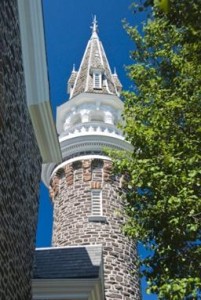Rugged history, promising future
St. Matthew’s Lutheran Church—reflecting the character of the biblical narrative itself—is the story of a faithful God in relationship with a mixed bag of leaders and followers. Born of nebulous, anxious beginnings which include the William Penn family swindling the Lenni-Lenape Indians (Walking Land Purchase of 1737), the purported threat of too many German “church” and “sect” immigrants (Ben Franklin), the missionary mind of clergyman Heinrich Muhlenberg, and the pioneering prowess of Heinrich Keller after whom the congregation was first named, St. Matt’s was and is very colorful.
Keller’s Church, also known as Tohecka (Tohickon) Church, was one of three sibling churches (Peace Luthera n, Hagersville and St. Peter’s UCC, Weisel) that originally evolved from St. Peter’s Union Church.
n, Hagersville and St. Peter’s UCC, Weisel) that originally evolved from St. Peter’s Union Church.
First worship services, spoken and sung in German, most likely occurred in a schoolhouse. Braving frozen creeks and dense thickets that tore his clothing and skin, Muhlenberg rode horseback to supervise his fledgling congregations and itinerant preachers. On one occasion he journaled: “I found a number of souls…who were concerned about their salvation and eager for the word, which made me very happy…” Another entry: “I became acquainted with a few well-meaning souls, but as for the rest, they seem to be a rude, wild group who had been corrupted and hardened in wickedness by the vagrant preachers.” Muhlenberg responded by drafting Lucas Rauss from Transylvania as the congregation’s first official “shepherd” of record. Under the tutelage of Muhlenberg, Rauss preached his first sermon at Keller’s Church on July 7, 1751.
Over the course of two centuries and four building campaigns, more than 30 pastors would come to serve Keller’s-St. Matthew’s Lutheran Church, celebrating gospel ministry hewn by and in the face of war, disease, disaster, and the vices of humanity. Today, the people of St. Matthew’s—God-imaged, Christ-commissioned, Spirit-animated, and as humanly imperfect as ever—are called to wash the proverbial feet of a technologically-mediated society.
Historical Information included in this narrative is cited from A Light on the Ridge: The Life and Times of the People of Kellers (sic) Church (Bryan, 1999/2001).
